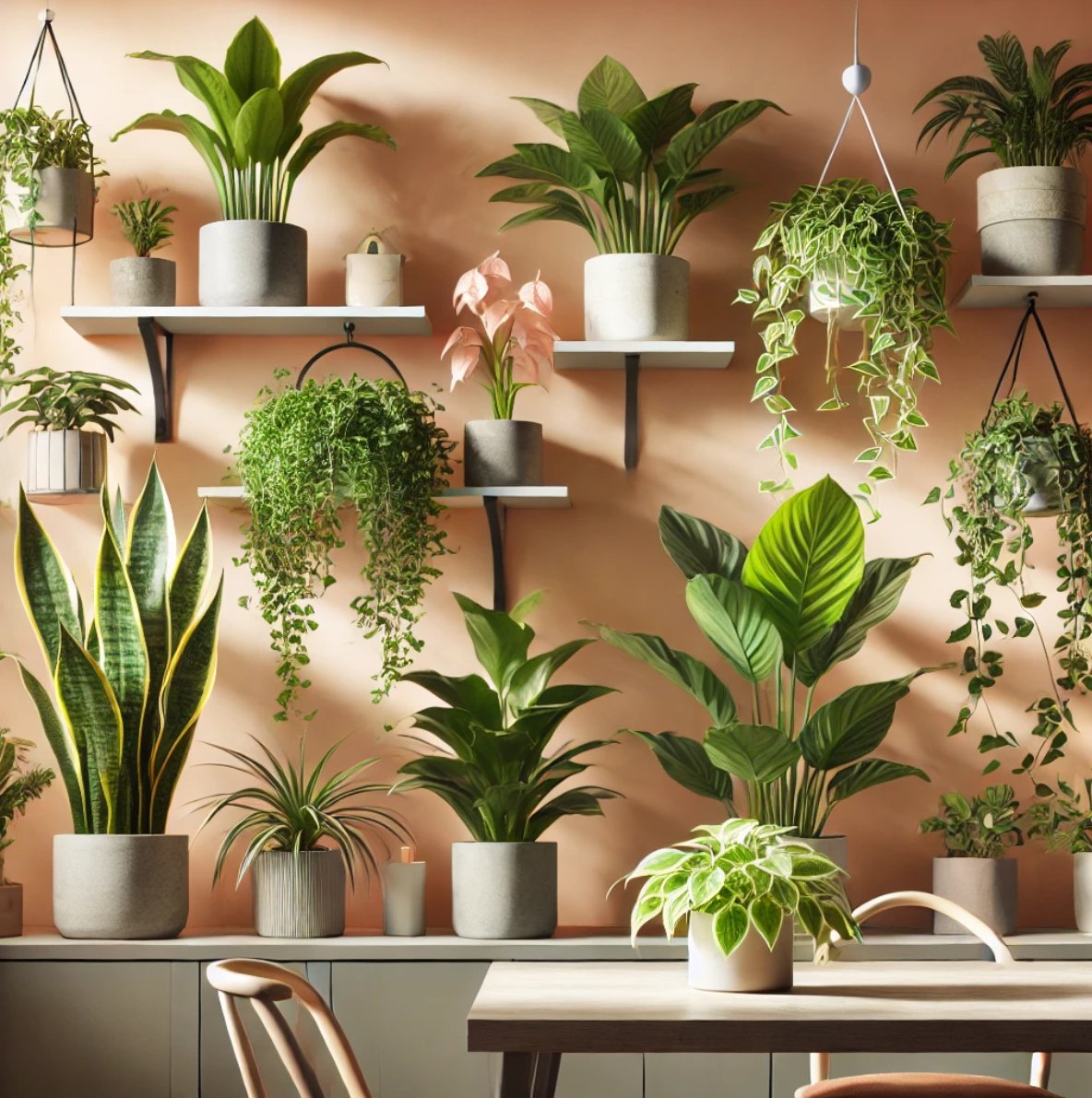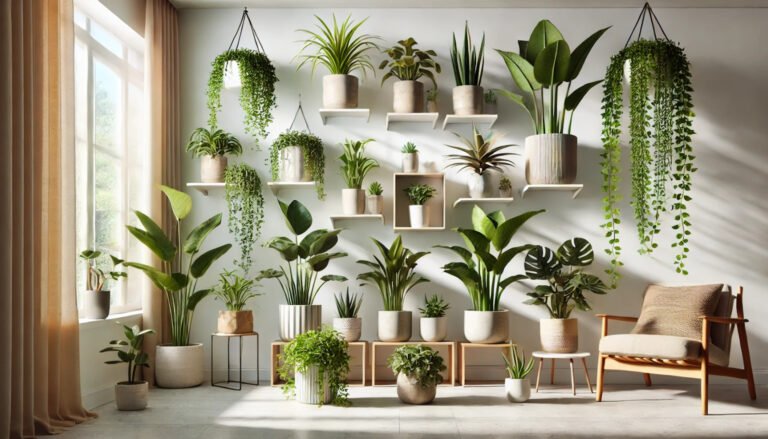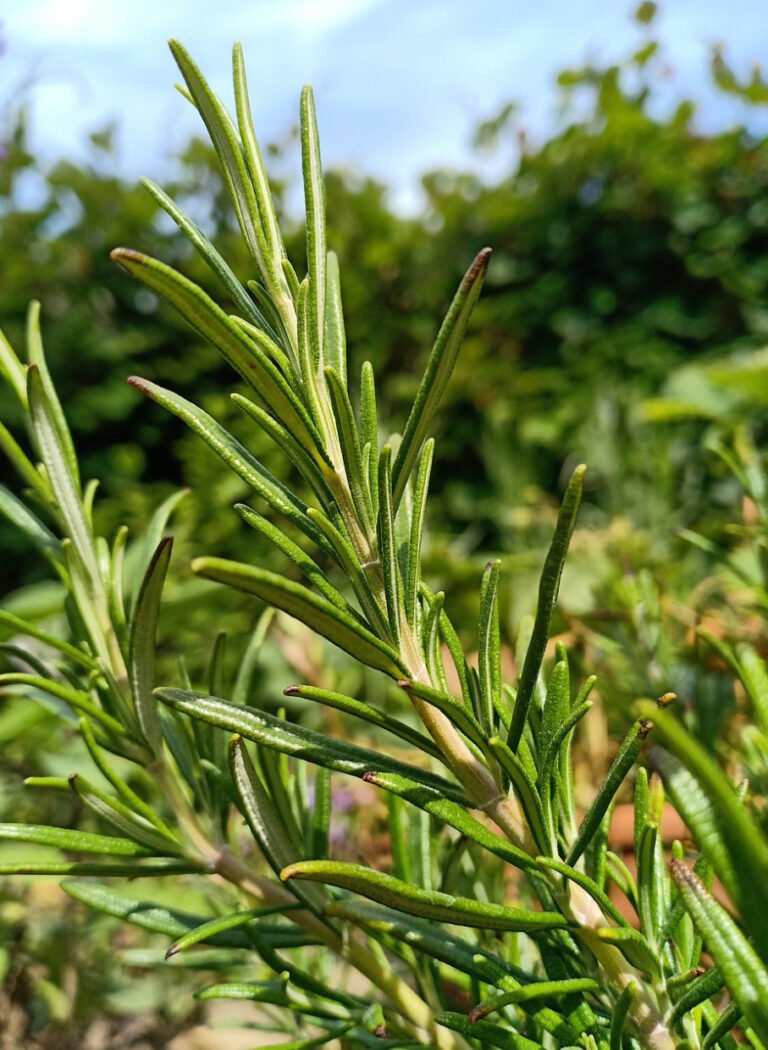Indoor plants that survive without or with some light


1. Snake Plant (Sansevieria)
- Care Method: Very low maintenance.
- Placement: Ideal for low-light areas like hallways or bathrooms.
- Light: Thrives in low to medium, indirect sunlight.
- Watering: Water sparingly; only when soil is completely dry (every 2-4 weeks).
- Disease Prevention: Avoid overwatering to prevent root rot. Wipe leaves occasionally to remove dust and keep the air circulating to prevent fungal infections.
2. Pothos (Epipremnum aureum)
- Care Method: Beginner-friendly and resilient.
- Placement: Great for shelves or hanging baskets.
- Light: Tolerates low light but prefers indirect, bright light.
- Watering: Water when top 1-2 inches of soil are dry.
- Disease Prevention: Clean leaves regularly, and check for yellowing (a sign of root rot from overwatering). Treat any infestations with neem oil.
3. Spider Plant (Chlorophytum comosum)
- Care Method: Very low maintenance.
- Placement: Versatile; works well in bathrooms or living rooms.
- Light: Prefers bright, indirect light but tolerates low light.
- Watering: Keep soil moderately moist, watering about once a week.
- Disease Prevention: Wipe leaves to prevent pests like spider mites. If leaves turn brown, increase humidity or check for over-fertilization.
4. ZZ Plant (Zamioculcas zamiifolia)
- Care Method: Nearly indestructible.
- Placement: Perfect for low-light areas like offices or bedrooms.
- Light: Tolerates low light; avoid direct sunlight.
- Watering: Water once every 2-3 weeks; allow soil to dry out between waterings.
- Disease Prevention: Prevent root rot by avoiding overwatering. Clean leaves periodically and use neem oil if pests appear.
5. Peace Lily (Spathiphyllum)
- Care Method: Easy to care for.
- Placement: Ideal for shaded corners of rooms.
- Light: Low to medium, indirect sunlight.
- Watering: Keep soil consistently moist but not soggy.
- Disease Prevention: Wipe leaves and watch for yellowing leaves as a sign of overwatering. Use a mild soap solution for pest control if needed.
6. Aloe Vera
- Care Method: Very easy, minimal care.
- Placement: Sunny windowsills or kitchen counters.
- Light: Requires bright, indirect sunlight.
- Watering: Water deeply but infrequently (every 2-3 weeks); allow soil to dry between waterings.
- Disease Prevention: Avoid water sitting in the center of the plant to prevent rot. Use neem oil spray to deter pests.
7. Philodendron
- Care Method: Very resilient and easy.
- Placement: On shelves or in low-light corners.
- Light: Prefers low to medium, indirect sunlight.
- Watering: Keep soil moderately moist; water when the top inch of soil is dry.
- Disease Prevention: Keep leaves dust-free. Inspect for pests like aphids or mealybugs; treat with insecticidal soap if needed.
8. Chinese Evergreen (Aglaonema)
- Care Method: Very tolerant and easy.
- Placement: Low-light areas, such as hallways or offices.
- Light: Thrives in low to medium light.
- Watering: Water when the top inch of soil feels dry.
- Disease Prevention: Wipe leaves to prevent dust buildup. If pests appear, use a mild insecticidal soap.
9. Rubber Plant (Ficus elastica)
- Care Method: Easy with occasional pruning.
- Placement: Living rooms or near east-facing windows.
- Light: Prefers bright, indirect light; tolerates low light.
- Watering: Water when the top inch of soil is dry (once a week).
- Disease Prevention: Dust leaves regularly to maintain health. Avoid overwatering to prevent root rot, and treat any aphids or scales with neem oil.
10. Monstera (Monstera deliciosa)
- Care Method: Moderate maintenance.
- Placement: Near bright, indirect light sources.
- Light: Bright, indirect light.
- Watering: Keep soil moist but not waterlogged; water once a week.
- Disease Prevention: Wipe leaves to prevent dust and pests. If leaves are yellow, check watering habits and drainage. Treat pests like spider mites with neem oil or insecticidal soap.
These plants vary in light tolerance, water needs, and placement preferences, making them adaptable to different home environments while providing aesthetic and air-purifying benefits.





